|
Ultralight aircraft (Canada)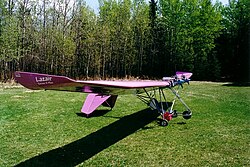 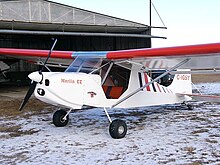  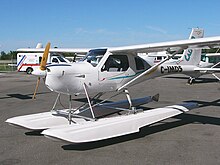 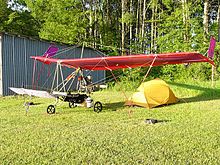 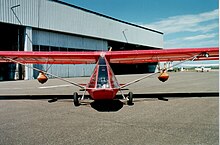  The Canadian Aviation Regulations define two types of ultralight aircraft: basic ultra-light aeroplane (BULA), and advanced ultra-light aeroplane (AULA). DefinitionRegulation of ultra-light aircraft in Canada is covered by the Canadian Aviation Regulations. An earlier definition[1] of "ultra-light aeroplane", effective October 10, 1996, meant:
On June 1, 2003, the definition was amended to state that an "ultra-light aeroplane" means either an advanced ultra-light aeroplane or a basic ultra-light aeroplane.[2] BasicOn July 6, 1956 the Department of Transport first issued new requirements for ultralight aircraft, a category that was eventually renamed "Amateur-built aircraft", leaving Canada without an ultralight category. The basic ultralight category was established as a new category in 1982 to fill this gap.[3] Regulation of ultralight aircraft in Canada is covered by the Canadian Aviation Regulations, which defines a "basic ultra-light aeroplane" as: an aeroplane having no more than two seats, designed and manufactured to have:
AdvancedAccording to Canadian Aviation Regulations, Part I, Subpart 1, an "advanced ultra-light aeroplane" means an aeroplane that has a type design that is in compliance with the standards specified in the manual entitled Design Standards for Advanced Ultra-light Aeroplanes (DS10141).[2][4] An advanced ultra-light aeroplane is an aeroplane which:
The advanced ultra-light aeroplane (AULA) category is similar, but not identical, to the American Light-Sport Aircraft (LSA) category. Many aircraft are available as AULAs in Canada and LSAs in the United States. Minimum useful loadAdvanced ultra-light aeroplanes shall have a minimum useful load, MU or WU computed as follows:
Maximum empty mass (weight)The maximum empty mass, MEmax, (WEmax) includes all operational equipment that is actually installed in the aeroplane. It includes the mass (weight) of the airframe, powerplant, required equipment, optional and specific equipment, fixed ballast, full engine coolant, hydraulic fluid, and the residual fuel and oil. Hence, the maximum empty mass (weight) = maximum take-off mass (weight) - minimum useful load.[5] The registration marks for an advanced ultra-light aeroplane after 1997 begin with "C-Ixxx". Prior to that date they were C-Fxxx or C-Gxxx.[5] OperationsAn ultra-light pilot permit, recreational pilot permit, private, commercial or airline transport aeroplane licence issued by Transport Canada, is required in order for a person to operate an ultra-light aeroplane in Canada.[6] Pilots holding a Recreational or higher license may carry a passenger in a two-seat advanced ultra-light aeroplane. Pilots with only an ultra-light permit may not carry a passenger in an advanced ultralight unless they have received a passenger carrying endorsement. Basic ultralights cannot carry passengers unless the passenger is another pilot. Student pilots undergoing training may be carried in basic ultralights. Canadian Basic and Advanced Ultralights may be flown in the USA if the pilot holds a Recreational Pilot Permit or higher designation. Pilots holding an Ultralight Pilot Permit with instructor rating and who have at least 2 hours of cross country experience may also fly to the US.[7] Any Canadian Ultralight flying to the US also requires a Special Flight Operations Certificate from the FAA. This is a form the pilot completes which is then valid for 180 days.[8] NomenclatureOfficially this category of aircraft are known in Canada as Ultra-light Aeroplanes although in common use the American term Ultralight Airplanes is often used.[2] See alsoReferences
External links |
Portal di Ensiklopedia Dunia